
- Start
- Double-deckers
- Tuppen
- Munken
- Hjelmen
- Karlhamnsfiolen
- Elvis
- Bulan
- Mohte
- Göteborgsfiolen
- Edvin
- Södling
- Norbergsfiolen
- Spetts
- Toftafiolen
- Bungefiolen
- Hammer
- Lumiere
- Metropol
- Mohte 2
- Jamtlifiolen
- Långalma
- Krokeken
- Antikrundanfiolen
- Angeredsfiolen
- Other swedish understringed fiddles
- Luthiers
- Other instruments with sympathetic strings
- References to violins with sympathetic strings
- Other instruments
- Contemporary fiddles
- Blog
- Origin of sympathetic strings
- Construction guides
- Search picture
- About me
- Bror Strand
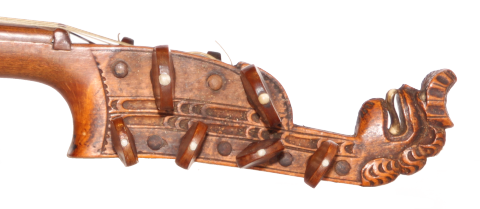
Photo: Jon Magnusson
This instrument is kept at the Swedish museum of performing arts (formerly known as the Stockholm Music Museum). It's official name is M222 but I call it "Tuppen" (the Rooster) because it's lions mane looks like a rooster crest. The instrument was transferred to the Stockholm Music Museum from another institution, probably Nordiska museet, and this happend in 1902. The instrument is unsigned but it looks so similar to the "Gothenburg fiddle" that it must be constructed by the same Luthier, Hans Severin Nyberg from Örkelljunga in Skåne. It is difficult to say if it is younger or older than "the Gothenburg fiddle" but it's probably constructed in about the same time (around 1768).
The neck, pegbox and head is pretty well made but the body is a little more primitive. The instrument has a painted line instead of purfling. The bridge might be authentic but it is not certain. The "Gothenburg fiddle" has quite extensive, painted decorations quite similar to the rose-painting on harding fiddles. The "Rooster" has some painted decorations (might be intarsia or pyrography) but not to the same extent, there are some flowers in all corners plus two larger painted patterns on the bottom. The tailpiece has intarsia with exactly the same tulip shaped design as the "Karlshamn fiddle". It is constructed by a couple of pieces which are glued together, an interesting and efficient way to construct this type of tulip pattern.
The Swedish museum of performing arts has some measures on it's web page but they are unfortunately not correct. I have measured the instrument myself and that is the data that are published here.
Hans Severin Nyborg
Hans Severin Nyborg was almost completely unknown until recently but new information has been extracted from the church records of Örkelljunga. Nyborgs brother in law was Carl Johan Broberg, a well known luthier in Gothenburg and Nyborg was most likely an apprentice in the Mothe workshop in Ängelholm 1759-1765. There are three preserved double-deckers made by Nyborg, one from 1760, one from 1768 and one unsigned. Nyborg was born in Landskrona and died in Örkelljunga in 1774.

Photo: Jon Magnusson
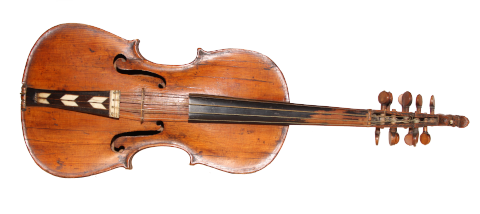
Photo: Jon Magnusson
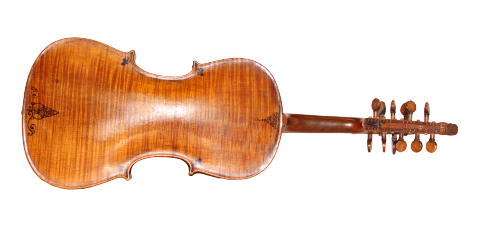
Photo: Jon Magnusson
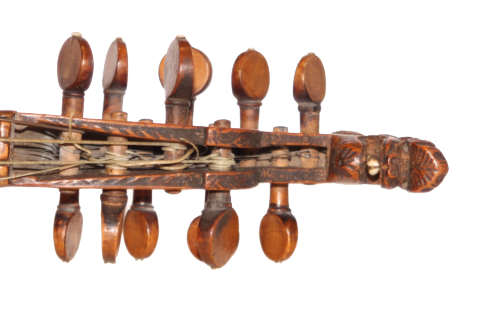
Photo: Jon Magnusson
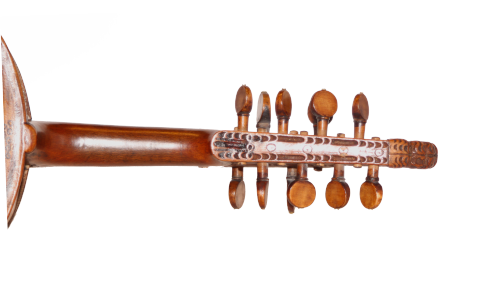
Photo: Jon Magnusson
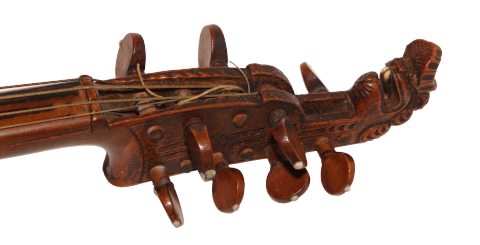
Photo: Jon Magnusson
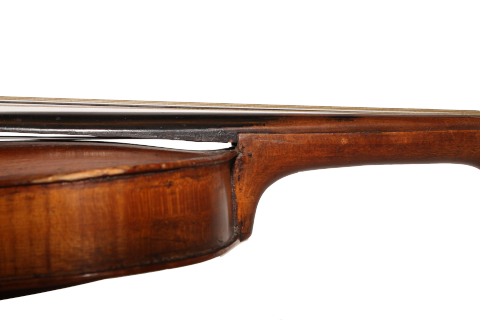
Photo: Jon Magnusson
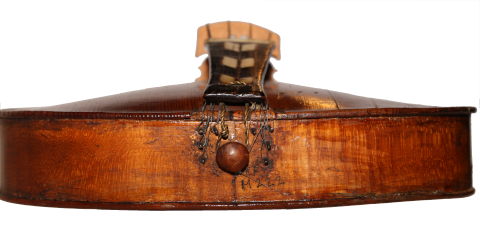
Photo: Jon Magnusson
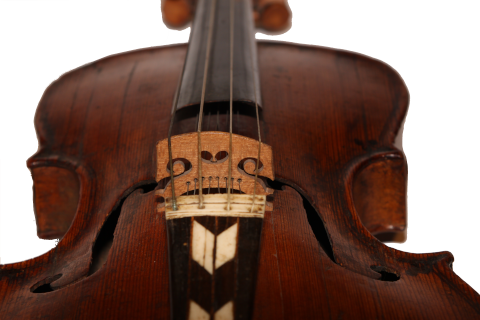
Photo: Jon Magnusson
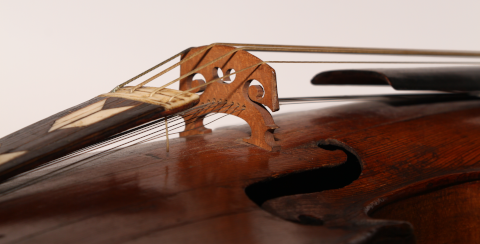
Photo: Jon Magnusson
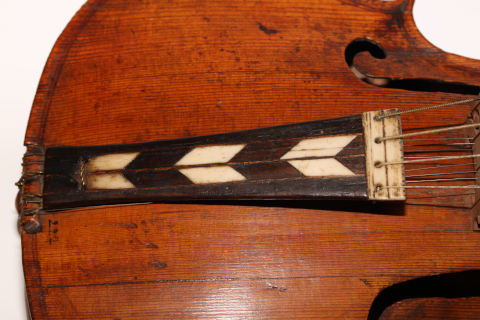
Photo: Jon Magnusson
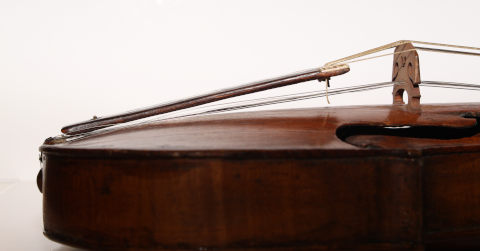
Photo: Jon Magnusson
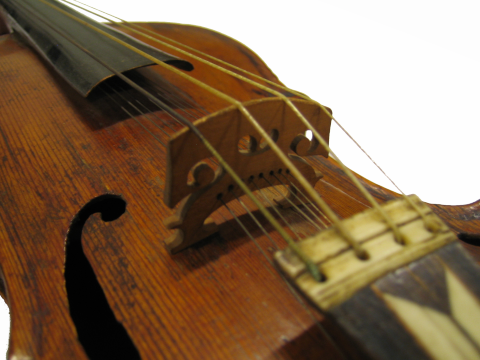
Photo: Jon Magnusson
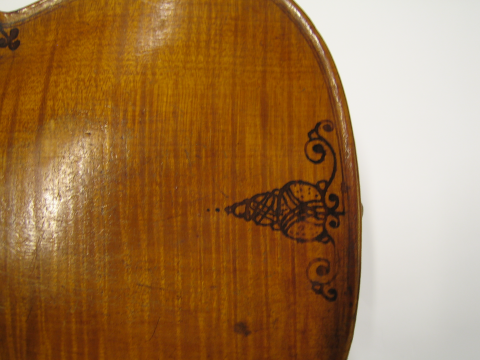
Photo: Jon Magnusson
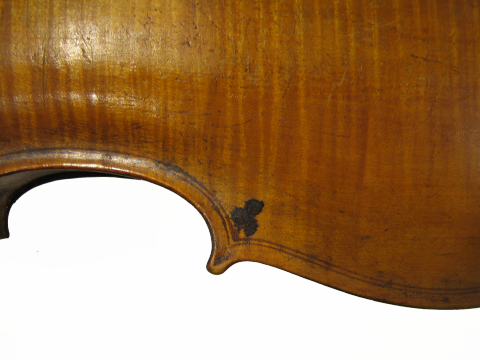
Photo: Jon Magnusson
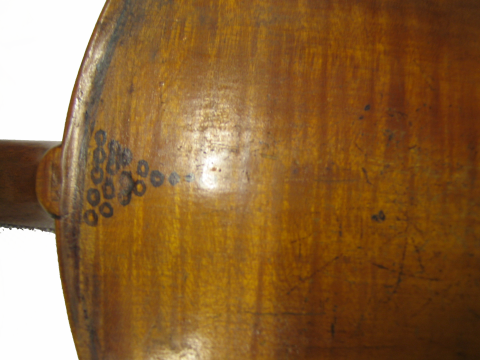
Photo: Jon Magnusson
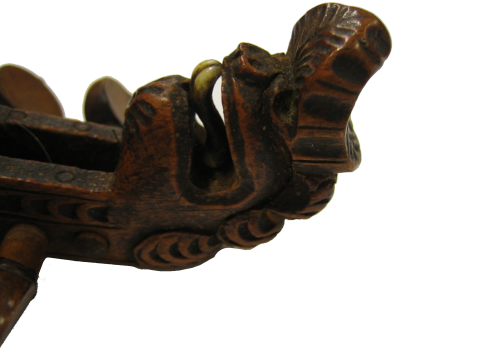
Photo: Jon Magnusson
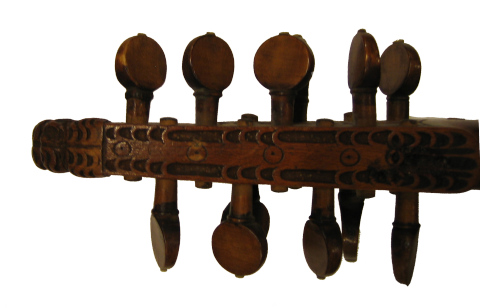
Photo: Jon Magnusson
| Name | Tuppen |
| Type | Double-decker |
| Luthier | Hans Severin Nyborg |
| Year | |
| Origin | Eket, Örkelljunga, Skåne |
| Found in | Scenkonstmuseet, Stockholm |
| Playing strings | 4 |
| Sympathetic strings | 8 |
| External link | External link |
| Total length | 612 mm |
| Scale length | 309 mm |
| Length of corpus | 353 mm |
| Height | 60 mm |
| Rib height | 31 mm |
| Other instruments built by Hans Severin Nyborg | ElvisGöteborgsfiolen |
| Other instruments with the same number of sympathetic strings | MunkenHjelmenKarlhamnsfiolenElvisBulanMohteGöteborgsfiolenEdvinSödlingNorbergsfiolenHammerMohte 2JamtlifiolenAntikrundanfiolenAngeredsfiolen |
| Other instrument with rose painting | MohteGöteborgsfiolenEdvinAngeredsfiolen |
| Other instruments with tulip intarsia | KarlhamnsfiolenJamtlifiolenSpele-JockeDubbeltulpanenTrippeltulpanenKulturengamban |
| Other instruments with a lion head | KarlhamnsfiolenElvisBulanGöteborgsfiolenEdvinSödlingTielkegamban M2475JamtlifiolenBostongambanKulturenfiolenArwitgamban M285DubbeltulpanenTrippeltulpanenKulturencellonKulturengambanAntikrundanfiolenAngeredsfiolen |